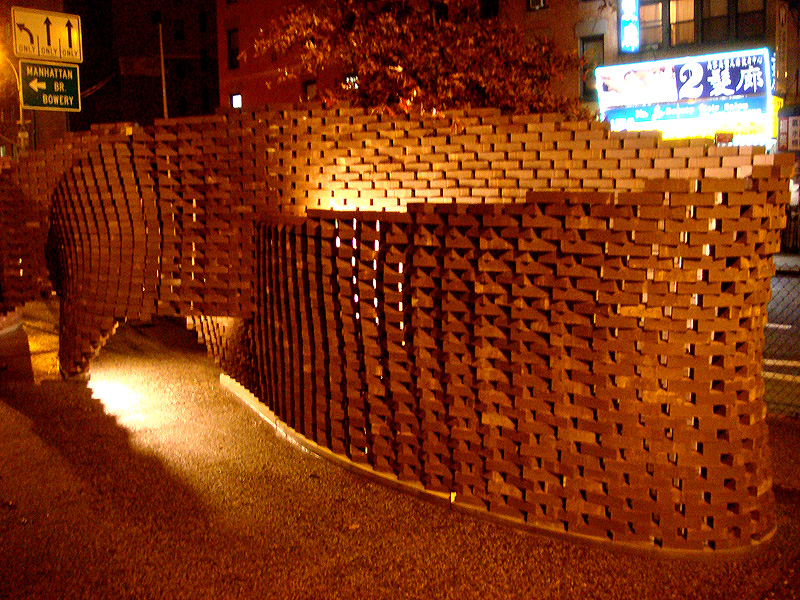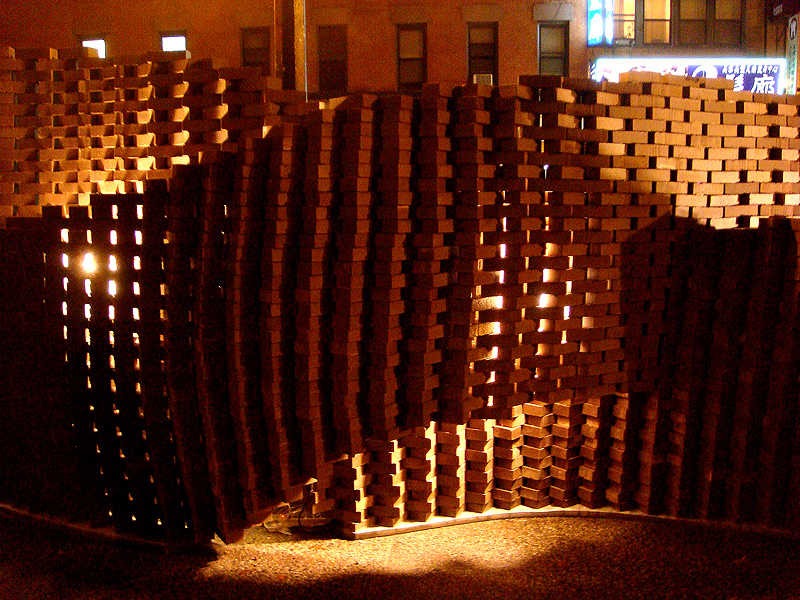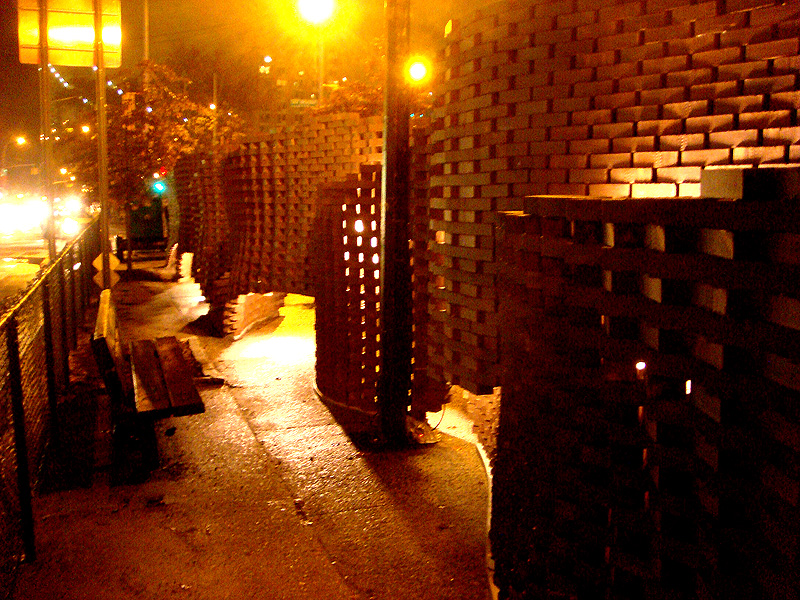I thought I would share these photos I took last year of a public art installation in New York. Located on a pedestrian median in the middle of Pike Street in the Lower East Side, the brick sculpture was created by a robot. The sinuous brick ribbon weaves in and out of itself to form a single loop.
Swiss architects Gramazio & Kohler programmed the robot to place each brick according to a mathematical algorithm, gluing each successive course together to create a rigid structure. Besides its inherent sculptural beauty, imagine the architectural implications of robot-built buildings and the precise geometric forms that could transform the nature of the material.
Here’s a little bit of info from Science Daily.
The installation in New York exemplifies how, by combining digital design and fabrication tools, the architects can now control the production process in every detail. The resulting buildings therefore exhibit shapes and structures that could never be created by hand—not without an enormous amount of effort, at least. Consequently, the point of Gramazio and Kohler’s research is not to put the bricklayer out of a job. Their latest installation is primarily supposed to be for the purposes of architectural research—a test of the potential and limitations of this production technique with respect to a contemporary design culture, as they put it.
Gramazio and Kohler’s research team already used R-O-B to build a oscillating wall at last year’s Architecture Biennale in Venice. The wall, however, was erected in front of the exhibition hall and then transported into the premises. Thus, “Pike Loop” is the first installation of its kind to be constructed on its eventual exhibition site.
It’s still there, but I’m not sure how much longer it will be standing. More info from the Storefront for Art & Architecture. You might also be interested in a similar wall created at Harvard.
If the video below doesn’t work, click here.












One thing that strikes me here is the way new technologies and new ways of using technology can add to a cityscape. An aspect of the excitement of urban life is the mix and tensions between flux and stasis. A good city saves its architecture, nurtures the character of its face – but it also encourages changes in its expression. Street fairs, installation art, buskers, impromptu art show, mobile vendors, electronic display boards – all dance in front of the unchanging or slowly changing backdrop of a city’s ‘prepared’ face. That is city life. Bring on the robots!